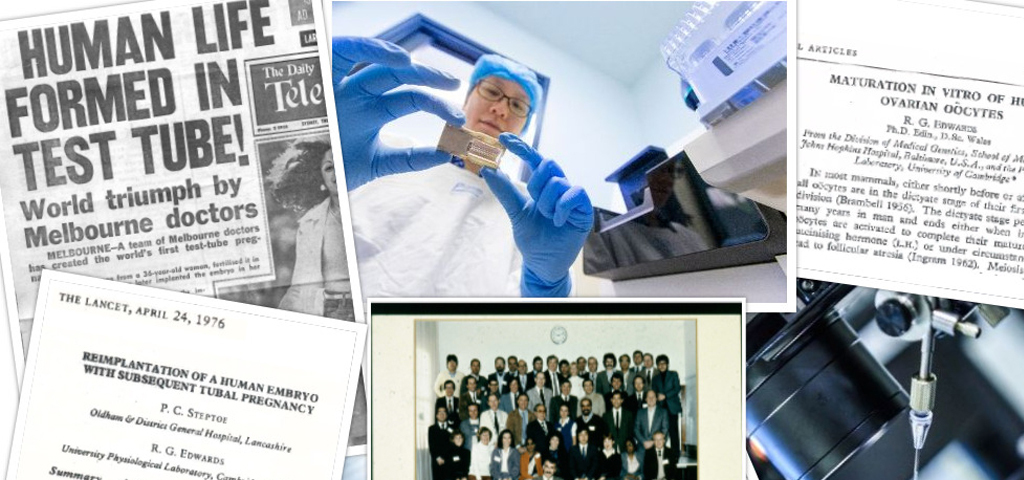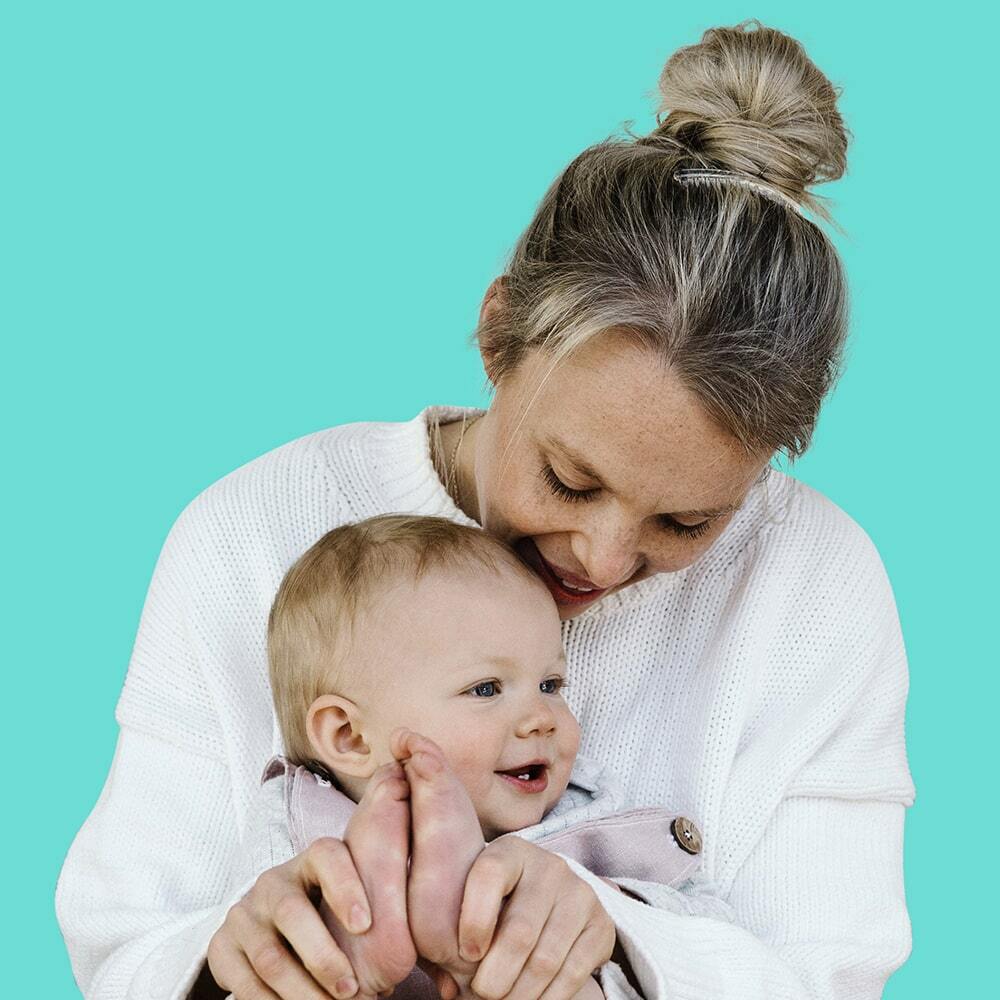IVF – where has it come from and where will it go?
11 December 2017

11 December 2017

IVF has come a long way since the early 1970’s when it all really began, but how did it get to where it is today, and where will we see it go
What is IVF, and where did it come from?
In 1934, a paper published by Harvard University suggested the possibility that mammal eggs could, theoretically, develop as normal in a test tube (in vitro). 25 years later, the first IVF animal birth was achieved (a rabbit). It was a breakthrough for science, but would it be a breakthrough for future hopeful parents?
In 1970, the In Vitro Fertilisation research program began through a joint effort between Melbourne and Monash Universities at the Queen Victoria Hospital and the Royal Women’s Hospital. Three years later, the same team achieved the world’s first IVF pregnancy. No more successful pregnancies were achieved in the few years following the milestone, however the achievement spurred on scientists from around the world to help make the dreams of many to have a child a reality. In 1978 in the UK, another massive milestone came – the first IVF birth – and with it came hope and a new wave of determination.
Despite advances in the technology used, the science and biology behind the basics of IVF treatment has remained the same. After the ovaries are stimulated to produce eggs, the eggs are removed in a procedure known as ‘egg collection’ and, on the same day, sperm is either provided by way of a fresh sample from the partner or thawed from a previously frozen sample. The egg and sperm are combined in the lab and 2- 6 days later are transferred into the uterus in the hope that they ‘take’ or implant and result in pregnancy.
IVF was initially focused on assisting women with blocked fallopian tubes to conceive, however, male subfertility soon became a major part of the program as it was discovered that many men experiencing an inability to impregnate their partners actually had sufficient sperm to work in vitro.
Why did we need IVF?
Before IVF, there was no treatment option for male infertility or fallopian tube blockages, so couples that were unable to fall pregnant naturally were forced to come to terms with remaining childless.
Looking back a few decades, the majority of women hoping to be mothers did so in their early to mid 20s. Even as late as 1991, only 23% of new mothers were aged 30 or over. In just a couple of decades, that statistic has risen to almost 50% [1]. Since even the simplest research into IVF began, many more women have chosen to remain in education for longer, put off or don't find a long-term partner and/or develop a professional career before seriously thinking about starting a family.
With mature age pregnancies more common, and in many cases desired, assisted reproductive technology has had to keep up with societal trends and changes. The development and now accessibility of IVF has allowed individuals and couples to have more control over their hopes to start and grow a family and receive assistance if things aren’t quite going to plan.
Advancements in technology over the years
With successful IVF came the development of a number of other forms of assisted reproductive technologies such as use of donor eggs, Intracytoplasmic Sperm Injection (ICSI), and important, risk-identifying screening technologies.
An important advancement in fertility occurred when ICSI treatment was developed, finally allowing a treatment option for male subfertility. The process gives single sperm a helping hand to ‘enter’ the egg if sperm motility or quality is poor. Scientists are able to hand pick the most healthy sperm available, which is then carefully deposited into the center of the woman’s egg in the lab in the hope that fertilisation occurs.
Fertility treatments certainly aren’t ‘one size fits all’, and often attempts to use a woman’s own fresh eggs aren’t enough. Women are now able to freeze their own eggs for later use, which may be preferable for a number of social or medical reasons. However, for women who are unable to conceive using their own eggs, donor eggs may be an option. Before egg donation was possible, the difficult, drawn-out and incredibly expensive process of adoption was the only option for many couples – including same-sex couples – who were unable to conceive naturally.
In another major fertility milestone, 1988 saw the successful use of PGD (Pre-Implantation Genetic Diagnosis) - a scientific technique that is able to test embryos for specified genetic conditions or abnormalities. Australia’s first birth following PGD was achieved in 1996. Later, this technology would further develop to include PGS (Pre-Implantation Genetic Screening), which is able to detect 'normal' embryos without any chromosomal issues. These techniques enable scientists to select only chromosomally normal, unaffected embryos for transfer during an IVF cycle, maximising the likelihood of success and a healthy baby.
Moving forward: what’s next?
The invention and development of IVF and other fertility treatments did not come easy. Quality, dedicated research teams are vital in helping to develop new and effective fertility treatments to continue increasing the chances of successful pregnancies even in the most complex cases. Through clinical trials, training and scientific advancement, ongoing research projects aim to turn theoretical possibilities into real treatment options.
Research currently in progress by the Monash IVF team looks at aspects of fertility such as ovarian stimulation, storage of reproductive material (for example freezing of tissue or eggs before cancer treatment), and the genetic basis of male infertility. The more dedicated research is undertaken, the more chances we have to fulfil the dreams of future individuals or couples.
Looking back at fertility milestone
1973: In what’s called a biochemical pregnancy, this was the first time an embryo had ever been implanted and successfully detected by the mother’s reproductive system and pregnancy hormones. The world first IVF pregnancy did not result in a birth, however it was a monumental moment for the fertility world and a giant leap forward for future individuals and couples that would experience infertility.
1978-1980: Finally in 1978, the first human IVF baby, Louise Brown, was born in the UK after 102 attempts at embryo transfer, and a second birth, Alastair McDonald, was achieved in January 1979. Australia’s first IVF baby, Candice Reed, was born on June 23, 1980. Within one year, Monash IVF had achieved 14 pregnancies resulting in 9 births.
1983 – The world’s first frozen embryo birth (born from an embryo frozen prior to transfer)
1984 – The world’s first birth from donated eggs achieved - successful treatment using donor eggs was achieved, providing women unable to conceive using their own eggs with another option.
1985 – The world’s first pregnancy and birth from surgically removed sperm was achieved, with the operation successfully overcoming a blocked sperm duct.
1987 – Development of world’s first sperm microinjection technology, which paved the way for the development of Intracytoplasmic Sperm Injection (ICSI) treatment. A pregnancy would later be achieved through ICSI in 1995.
1989 – Australia’s first IVF surrogate birth1999 – A breakthrough for hopeful parents living in remote areas or away from capable fertility clinics, 1999 saw the world’s first IVF/ICSI pregnancy and birth after successful air transport of oocytes (egg cells).
2013 – Australia’s first pregnancy from ovarian tissue grafting, successfully re-implanting ovarian tissue into a woman who had experienced premature menopause due to chemotherapy.2016 – Australia’s first gene sequencing prenatal screening test, NestScreen, designed to identify pregnancies with increased risk chromosome conditions.

Wherever you are on your journey, one of our supportive nurse enquiry team can help you understand your options and take the next step. These conversations are free and informative.